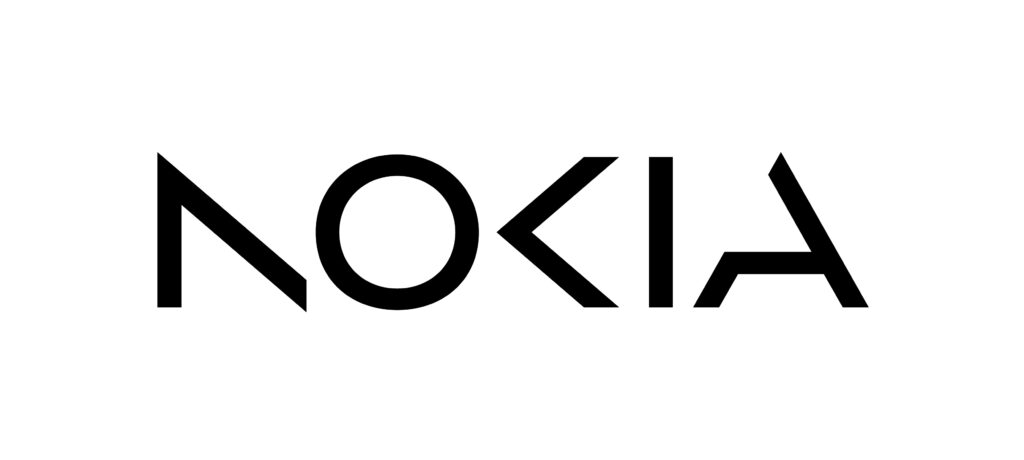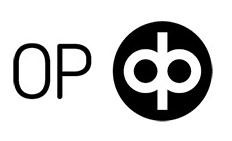Supergraph: The information network under the sea
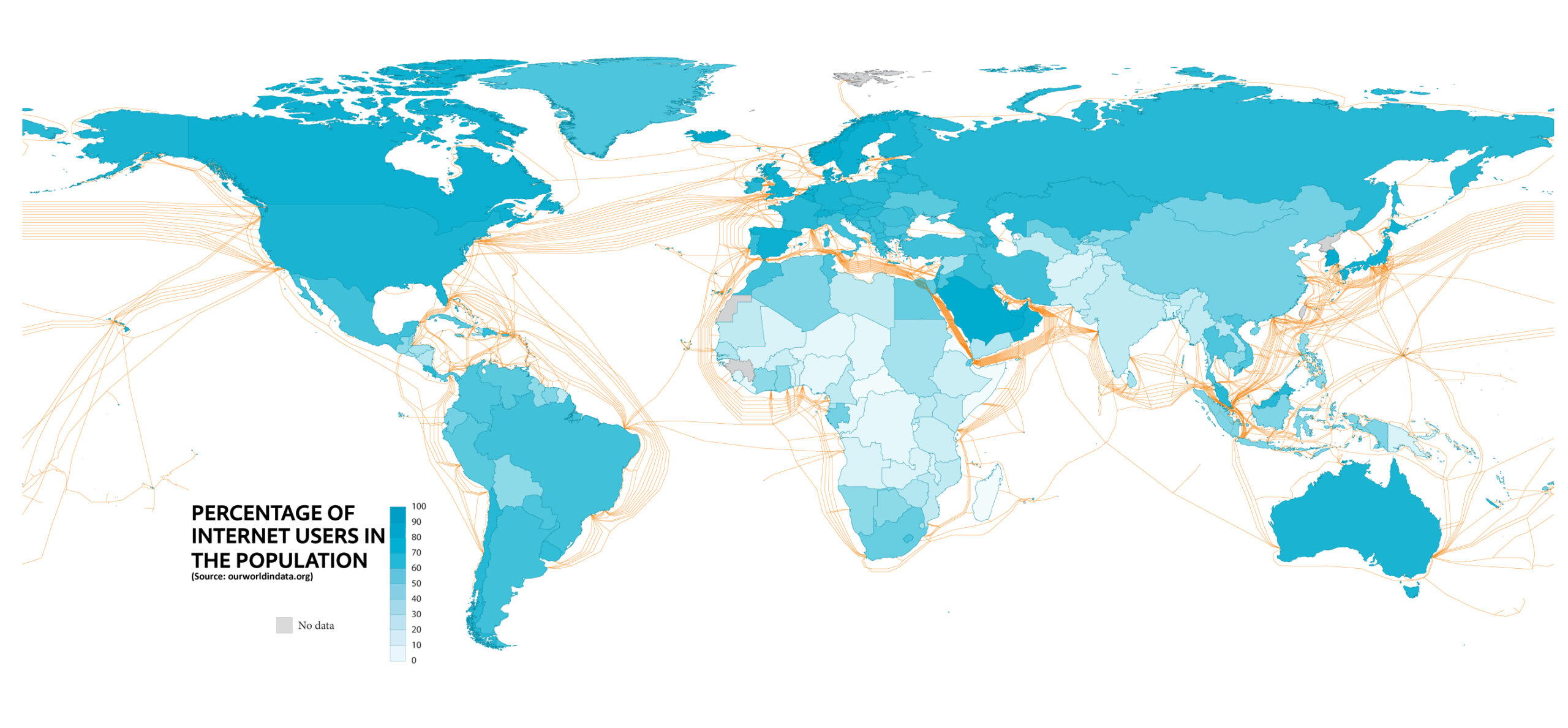
Percentage of internet users in the population (Source: ourworldindata.org)
Submarine communication cables form the internet’s system of veins that enables the distribution of data to an increasing number of countries, ever more quickly.
When the first cross-continental submarine communication cable was drawn in 1858, people on both sides of the Atlantic were able to send telegraphs to one another. Now there are more than 430 active submarine cables, and they cover all oceans except the Arctic Ocean.
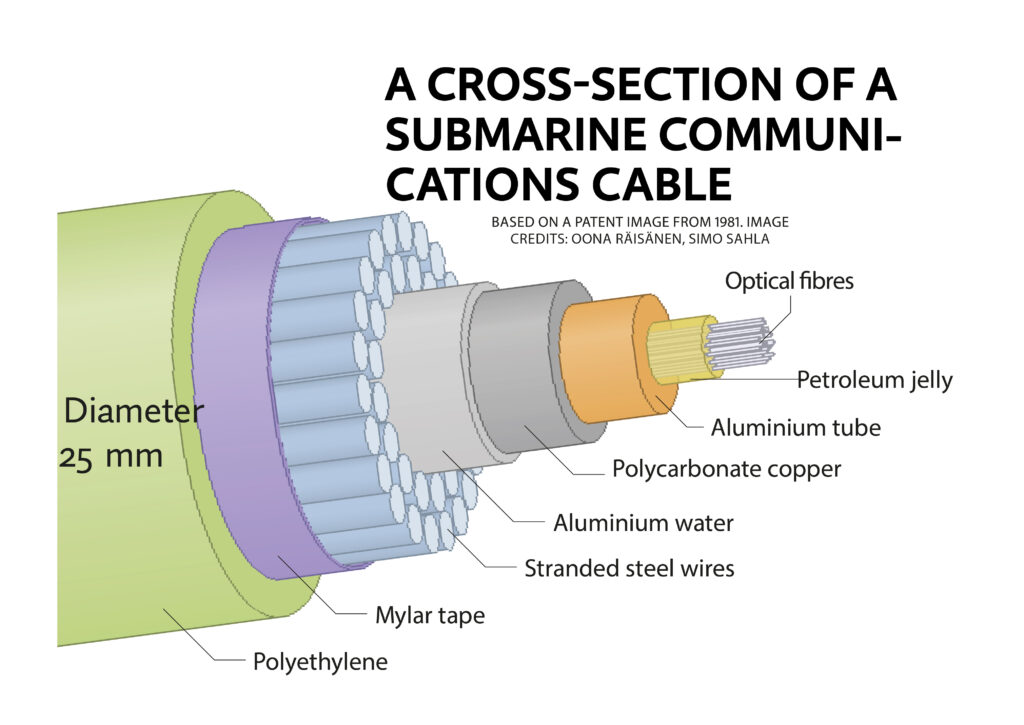
Typically, the diameter of the cables is 25 millimetres, and they weigh 1,4 tons per kilometre. The combined length of the cables is estimated to be more than 1,3 million of kilometres. If all cables were put in sequence one after another, they would go around the globe 30 times.
The Northwest Passage, the sea route between Europe and Asia on the northern side of North America, still lacks a submarine cable. However, this will change soon: Finnish data communication company Cinia and the Japanese Arteria Networks intend to build a cable system in the region. The system is meant to commence activity by the end of 2025, and its estimated cost is a billion euros.
If all submarine cables were put in sequence one after another, they would go around the globe 30 times.
The cable between Norwegian Harstad and Svalbard was cut in January 2022. Norway expressed a concern that Russia may be capable of such sabotage. In February, the Norwegian police confirmed that the cut was a result of human actions, but currently there is no evidence of who was behind the malfunction and what their intent may have been.
The greatest concentrations of submarine cables are between Europe, Asia, and North America. This is for a reason: the central internet service providers and companies operating root name servers are located in North America.

The modern submarine cables based on optical fibre technology transmit enormous amounts of data. For example, the transmit capacity of the MAREA cable between Spain and the United States is 224 terabytes per second.
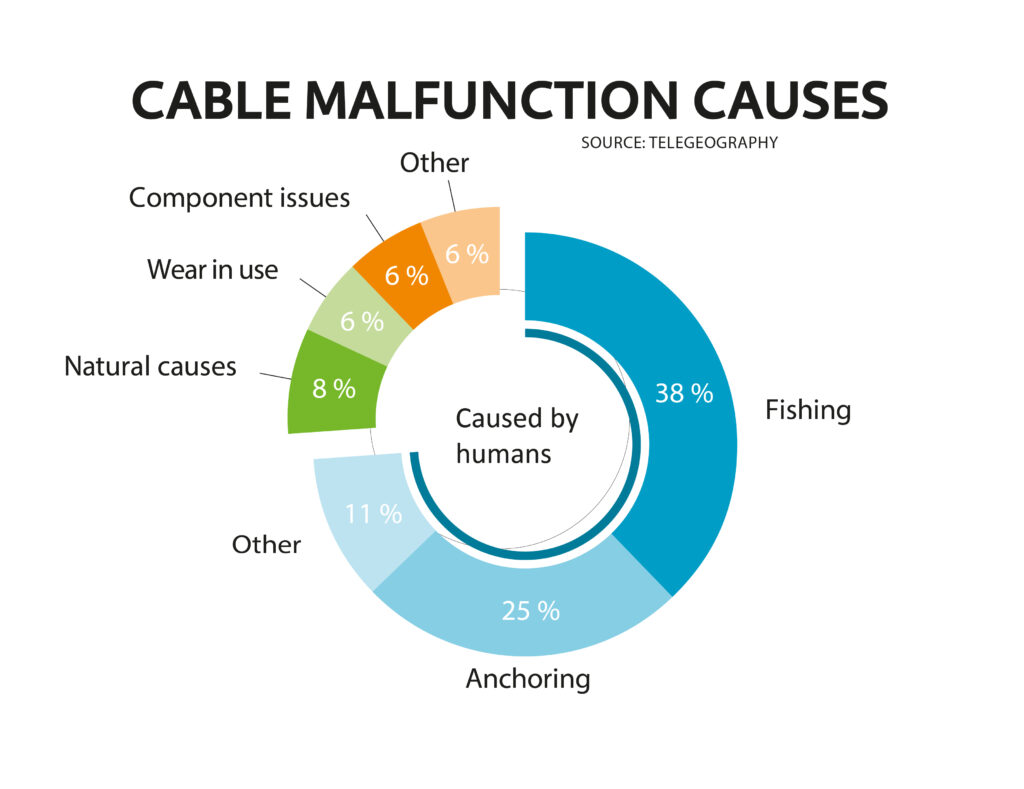
Submarine cables are not indestructible. The yearly average of cable issues is a hundred, and most of them are caused by human actions. Some of the instances may be intentional – there have been concerns raised about cable sabotage after geopolitical tensions have increased.
Without this information network under the sea, the internet in its current scale would not be possible. For instance, this supergraph may have ended up not being created and published.
The supergraph was originally published in Alma Talent’s Tekniikka &Talous. Alma Talent is a partner of Millennium Technology Prize.
Sources: Telegeography, Tekniikka&Talous, YLE















